Apologia pro blogpost sua
My perceptive
Reader may recall from last July a blog post regarding Titles and what makes a good one. Fired with zeal to continue the series, I
decided the next thing after Titles was the Idea for the story. Where do
you get ‘em from? I often know where my
own come from. Not always, but often
enough. But only a fool estimates a
population parameter from a sample of one.
So some while back, 9 February to be exact, I sent requests to the
Committee of Correspondence asking them for examples of their own stories and
where they had gotten the ideas for them.
You can’t tell
just by reading the stories. Steven
Crane got the idea for The Red Badge of Courage not from any
experience of his own with war – he had none – but one day, after reading dryly
written stories of famous Civil War battles and military leaders in Century
Magazine, he reported thinking, "I wonder that some of those fellows
don't tell how they felt in those scraps.” And this gave him the idea of capturing the emotions
of combat.
Alas, my
intentions were temporarily blocked by my close brush with death, which I
mentioned in an earlier blogpost while still somewhat in a stupor in my hospital
room. One of the doctors said to me just
last week on a follow-up visit, holding his forefinger and thumb in imitation
of a micrometer measuring a very thin sheet of aluminum coil stock, “You were
this close to being on the wrong side of the grass.”
There’s a story
in that phrase, somewhere. There is at least a title: "The Wrong Side of the Grass."
In any case, I
am only now getting back up to speed and something in my hindbrain jiggled and
reminded me that I had saved the sundry responses, but had not assembled the
essay. I hope the Correspondents will be
understanding over the delay.
The root of this
essay is a slide show I put together for a meeting of the Writers’ Café of the
Greater Lehigh Valley Writers’ Group, a.k.a. GLVWG, which is pronounced just as
it’s spelled and is probably a town in Wales.
The slide show in turn was based on materials gleaned from
Thomas Kinkade and the Literature of Ideas
Ideas are to
literature what light isto painting. Paul Bourget
The media
recently carried the news that Thomas Kinkade, The Painter of Light™, has died. Many of those who had purchased his paintings
and prints bowed their heads in contemplation of the mortality of man and the
likely amortization in the values of his paintings. The art world breathed a hearty sigh of relief. Kinkade was regarded with disdain by the art
world as the Master of Kitsch. Consider
these two paintings of the Chicago Water Tower:
Writes Joe
Carter about these two nearly identical painting, “the first is unquestionably technically superior. The use of texture and shadow puts the viewer
within the picture. You can feel the
chill of the cold Chicago wind and hear the sounds of the serene yet bustling
city.
In contrast, the second painting distances
the viewer from the scene. Artificial
light oozes out from every window and the background lights resemble a
brushfire, presenting a faux golden glow that is unrealistic and dull. And the carriage, though more sharply drawn
than in the first painting, is two-dimensional and distracting; it could have
been added in using Photoshop rather than daubs of paint. While the first work is worthy of gracing a
museum wall, the second is only worthy of garnishing a greeting card.
As you could probably guess, the second
painting is by Thomas Kinkade, circa 2004.
But what about the first painting, the more aesthetically superior
rendition of the Water Tower? It too is
by Thomas Kinkade. He painted it in 1998.”
And that is why so
many artists disliked Kinkade. He knew art;
but chose kitsch.
And yet… Are our only choices between sappy cottage
scenes blazing with light – and not a human being in sight – and this…? Where you will notice there are also no human
beings in sight.
#
OK, TOF (I hear
you say), what has that to do with ideas and writing. Well, Brandon, a philosophy professor who
blogs, put it this way:
All Kinkade did (and he did it deliberately, and was very explicit about doing it deliberately) was treat his paintings like authors in our society are expected to treat their literary works and like musicians in our society are expected to treat their music.
And if ideas are to literature what light is
to painting, as Paul Bourget
put it, how can the Literature of Ideas, which Science Fiction likes to call
itself, be distinguished from the Painter of Light™?
Well that all depends on the kinds of ideas, doesn't it? They could be ideas like the left-hand water tower - gritty, realistic, drawing the reader in - or like the right hand water tower - clichéd, sentimental rather than emotional. Or they could be like the Rothko, a tour de force. There may be room for all three. Everyone likes a light entertainment now and then; and may even enjoy a something abstract and experimental. But why does SF so often seem
to have no real human beings in sight?
The Dimensions of Ideas
When we speak of
the Idea for a story, there are two possibilities.
·
What is the Theme/Moral/Point of the story?
·
What was the notion that gave the author impetus
to write the story?
They might be two different things. We are concerned
here with the latter: the genesis of the story. This motivating idea can fall
into any of four categories: Theme, Character, Plot, and
Setting.
Ideas about a Theme:
James Jones wrote From Here to Eternity because he wanted to show that service in a peacetime military was
detrimental to a man’s character.
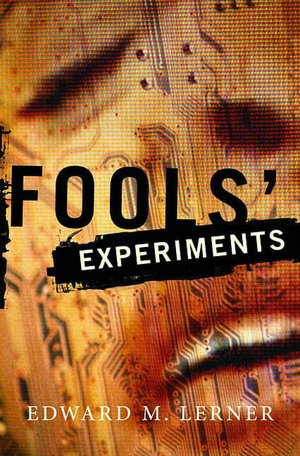 |
| Ed searched for a "character", found a novel |
Ideas about a Character: Donald Westlake began writing his “Parker” novels (under the name Richard Stark) because he was seized of a
character he envisioned walking across the GW bridge snarling at motorists who offered him a ride. Edward M. Lerner wanted to have a new type of
monster, science fictional and sympathetic “as all good monsters are.” In the resulting novel, Fools' Experiments, the creature is an artificial life / artificial
intelligence developed in a computer-science lab – and unwilling to remain
there.
Ideas about a Scene
or Plot Element: John Fowles got the idea for The French Lieutenant’s Woman from a painting of a woman on a quay looking out to sea. The image captured him and he wanted to know
how and why she had come to be there. Larry
Niven tells us that Destiny’s Road
formed around an irresistibly simple idea, a road shaped by a fusion drive; its
far end lost for two hundred years.
Ideas about a Setting:
Sometimes worldbuilding can lead to
a story. J.R.R. Tolkien
began to write Lord of the Rings
because he wanted to explore a world he had crafted. Hal Clement wrote Mission of Gravity
because he was intrigued by the problems of a very-high-gravity planet.
Don’t suppose
it’s as neat as this breakdown seems to suggest. And don’t jump to the conclusion that because
a story involves a certain character or setting or plot twist that any of those
were the reason why the author initially applied butt to chair and began
tickling the keyboard. We know that
Mesklin was the impetus for writing Mission
of Gravity because Hal Clement said so, not just because the story was set
there.
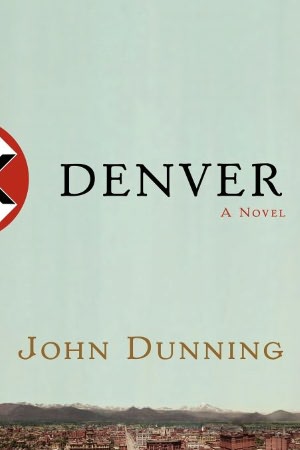 |
| Dunning wanted to write a particular kind of book |
John Dunning
wrote his novel Denver because he
wanted to write a blockbuster and included in the novel all the elements that
he thought were necessary. That is, he
wanted to write a particular kind of
novel, and from there he went on to develop characters, setting, plot, and so
forth. The one thing he knew for certain
was that the book would start with a steamy sex scene.
What an
idea.
#
Write What You Know
The paradigmatic
advice to writers is to write what you know.
This is dangerous advice, since most of us don’t know very much. There are too many quasi-biographical novels anyway. Use what you know.
But one obvious source of ideas is what we do know, either from personal experiences, education, or observation. John Dunning worked as a hot walker at a race track and has an avid interest in old-time dramatic radio. He used these not to write about his own experiences but to create The Bookwoman's Last Fling and Two O'Clock, Eastern Wartime, respectively.
But one obvious source of ideas is what we do know, either from personal experiences, education, or observation. John Dunning worked as a hot walker at a race track and has an avid interest in old-time dramatic radio. He used these not to write about his own experiences but to create The Bookwoman's Last Fling and Two O'Clock, Eastern Wartime, respectively.
When asked where
he got his ideas from, Harlan Ellison famously made the following reply:
When some jamook asks me this one (thereby
revealing him/herself to be a person who has about as much imaginative muscle
as a head of lettuce), I always smile prettily and answer,
"Schenectady."
And when the jamook looks at me quizzically,
and scratches head with hairy hand, I add: "Oh, sure. There's a swell Idea
Service in Schenectady; and every week I send 'em twenty-five bucks; and every
week they send me a fresh six-pack of ideas."
Leaving only two
questions: what the heck’s a “jamook”?
And has the price gone up since then?
#
Of course,
Harlan meant that ideas are everywhere.
It’s raining soup and you either have a bucket or a colander. It’s what you do with the idea that
matters. A common writer’s exercise is
to take any random item and write about it, just for practice. Once, when TOF was in high school on
detention, he was tasked with writing a 500-word essay on a tse-tse fly. It was supposed to be busy-work; but I
thought it was cool, and crafted a marvelous adventure involving a mutant
tse-tse fly and sundry companions. The
next time our class managed the trifecta of full monte detention, we were told
to do 500-words about the inside of a ping-pong ball. TOF wrote it as a sequel to the tse-tse fly
adventure in which said fly was trapped inside a ping pong ball and must needs
escape with the help of his trusty companions.
If you can’t write a mere 500 words on either a tse-tse fly, the inside
of a ping pong ball, or both, you
have no business attempting fantasy or science fiction. See JC's comment in the comm box down below.
And sometimes
even the writer may not be quite aware of where the idea comes from. Larry Niven tells us that “The Wisdom of Demons” fell into my head
during a grocery expedition. Now, as
tempting as it would be to imagine Larry acquiring the occult wisdom of the
netherworld and becoming an evil sorcerer while innocently buying corn flakes,
he meant the idea for a story with that title “fell into” his head. Yet the notion of someone standing in the
checkout line and somehow getting filled up with demonic wisdom is itself an
interesting idea for a story.
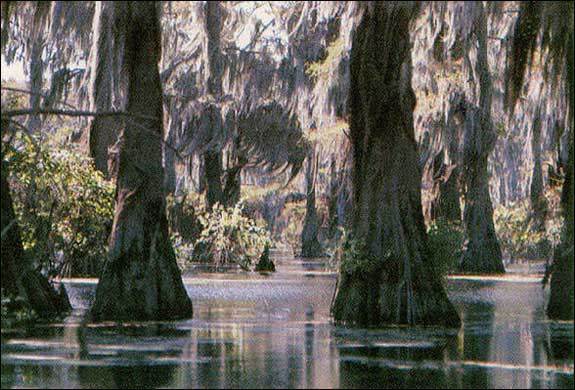 |
| Ideas rise dripping and leech-covered from the black water swamp of the mind. |
And that raises the
digression of inspiration versus imagination.
Inspiration comes from outside; imagination comes from inside. The former involves, well, daemons, or at
least the Muses. And sometimes it really
does just seem that way. Other times,
you know it’s coming from within because you are sitting staring at a blank
screen and blood is oozing out from the eyeballs. (TOF remembers when it was a blank sheet of
paper.) To put it another way, the
outside world is spitting ideas at you like an atomic pile with all rods
pulled; and your inner world is busily sorting and arranging these ideas to see
what clicks. What rises from that swamp, who knows where it came
from!
#
The Ponds Wherein Fish Do Swim
Others go to bed with
their mistresses; I with my ideas. –
José Martí.
Let
us leave aside the evidently lonely life of José Martí and look at some
examples of where actual writers got actual ideas. And the first is...
1. Actual Personal Experiences
You can get
ideas for stories for events in your own life, dramatic or simple. Ernest Hemingway was moved to write For
Whom the Bell Tolls by his
personal experience as an ambulance driver during the Spanish Civil
War. Similarly, Charles Dickens’
childhood experiences led him to write David Copperfield. But
how can a SF writer have actual personal experiences with, say, alien
cultures?
 |
| Juliette took a personal experience in Japan and put it on another planet |
Juliette Wade
tells us “I get my ideas primarily from my experience overseas – essentially,
from unusual situations or interactions that were extremely awkward because of
misunderstandings on one or both sides.”
One day when she and her husband and some friends went into a major
department store in Ginza, her husband asked one of the shop helpers, in
Japanese, to show him a pair of shoes and tell him the price. The shopkeeper replied by crossing her
forearms in front of her and saying, ‘No Engurishu!’ When my husband and I politely explained that
in fact we were speaking Japanese, and so could she show us the shoes, please, she
replied in the same way: ‘No Engurishu!’ Whereupon we were dumbfounded. Fortunately we'd been noticed by another shop
attendant who came over and apologized, and showed us the shoes.” But this experience gave Juliette the idea
that that humans could speak an alien language, but the natives wouldn't recognize they were speaking it. This led to the short story "Let the
Word Take Me," (ANALOG, July/August 2008).
2. Vicarious Experience: Observations
Experience
extends beyond what we have done to that which we have seen and heard or
read. John Steinbeck was not blown off
his farm in the dust bowl. He was a
marine biologist in California. But one
day he saw a jalopy full of Okies and piled high with their possessions and he was
consumed by a desire to write their story, which became Grapes of Wrath.
 |
| Larry read a science article and wondered what sort of story it would make |
A writer spends
his time observing – or ought to. Stay
awake and pay attention to “atoms of fact and attitude.” Observe people and how they react to
situations, especially those reactions that expose a characteristic. Here is a man in a diner, carefully counting
out coins to pay his bill. Perhaps he is
stingy. But perhaps he is
penniless. Or perhaps he is a coin
collector and is looking for a wheat penny or another rare coin among his
change. (Start with the fact; then spin
theories about it.) Joseph Conrad said
that in a series of chance encounters with various people he “met” all the
major characters for his novel Victory.
Reading counts,
too. Larry Niven wrote “Neutron Star”
after reading a science article by Isaac Asimov and combining that with a story
he had written for his Composition class at Washburn Univ. Isaac Asimov said that he got the idea for
the Foundation stories from reading Gibbons’ Decline and Fall of the Roman Empire.
3.
Vicarious
Experience: Friends and Acquaintances
A closely
related source is to find ideas in the experiences and comments of friends or
acquaintances. Louis Bouilhet mentioned
the case of a Norman physician’s wife who committed suicide to his friend Gustave
Flaubert, who turned it into Madame Bovary.
Henry James was sparked to
write The Ambassadors by a chance remark which Wm. Dean Howells’ made
to Jonathan Sturges, and which Sturges then reported to Henry James!
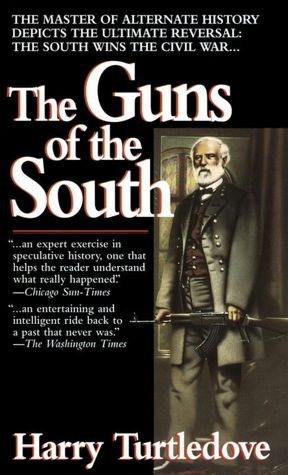 |
| Chance remark by a friend triggered GUNS |
4.
Current
Events: What’s Happening, Baby!
Another source
of ideas is current events. Theodore
Dreiser was inspired to write An American Tragedy by reading of the Chester
Gillette-Grace Brown murder case in the papers.
Less current, but similar, was Lawrence Block’s mid-1970s novel Not Comin’ Home to You, which was
inspired by the mid-1950s Starkweather/Fugate murder spree. But the current events need not be criminal. Daniel Defoe decided to write Robinson
Crusoe after he read a newspaper account of a castaway; and Herman Melville
got the idea for Moby Dick after
reading an account of a ship sunk by a maddened whale.
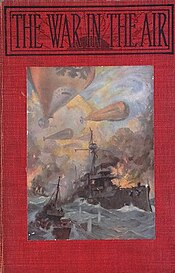 |
| Wells wondered how airships would affect future war. |
Social and
political upheavals may also suggest stories.
Mark Twain wrote The Guilded Age: a Tale of Today to satirize the
greed and political corruption in post-Civil War America. Tom Wolfe tried to capture the 60s in The
Electric Kool-Aid Acid Test. Gore
Vidal went for changing sexual mores in Myra Breckenridge.
Among current events
of interest to us skiffy types are developments in science and technology. H.G. Wells could see that airships were a
coming thing and wrote The War in the Air.
The imminent invention of
rocket ships led Robert A. Heinlein to write Rocket Ship Galileo.
5. History: What Happened, Baby!
You may also
find story ideas in historical events.
This is obvious in the case of actual historical novels, like Irving
Stone’s The Agony and the Ecstacy. But events in history may also inspire
stories set in the future or in fantasy worlds.
Harry Turtledove was inspired to write the Videssos books by the
history of the Byzantine Empire. Juliette
Wade takes inspiration from literature, such as ancient Japanese literature,
and from history, mostly French and Japanese history. My own short story, “The Steel Driver,” was
the story of John Henry told in a SFnal way: that is, the collision of human
beings with new technology.
One element of
history with built-in dramatics is war. In
science fiction, there is a whole sub-genre of “military SF.” But we’re talking about authors who get a
story idea from a war, or some incidents in a war. Thomas Flynn used his experience as a CAC
Marine in a Vietnamese village to tell a straight autobiographical story: A Voice of Hope, whereas Hemingway fictionalized
his personal experiences in the Spanish Civil War.
Joe Haldeman drew
on his Vietnam experiences for The
Forever War but its impetus was reportedly to “answer” Robert A. Heinlein’s
Starship Trooper (who wrote
partly in rebuttal to Kipling’s “The Army of a Dream”). But the germ for Starship Trooper not “to
write a war story,” but to write the story of an eighteen-year old boy serving
in the military of the future. That a
story involves war-time adventures doesn’t always mean that the story’s genesis
was a desire to write a war-time adventure.
6. Desires for an adventure
Speaking of
which, there are other kinds of adventures: journeys, explorations, encounters
of various sorts, whether in a past, future, or alternate world. Rafael Sabatini wrote Scaramouche because wanted to write swashbuckling
adventures.
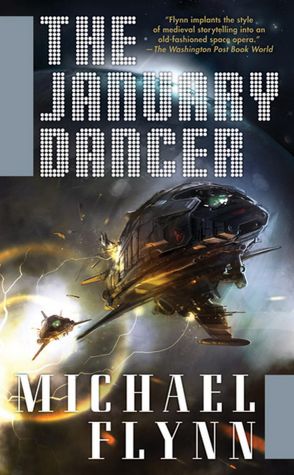 |
| The Maltese Falcon in Space! |
A great deal of science fiction and fantasy
falls in this category, where the inspiration doesn’t come from the cutting
edge of science, but from a desire to explore strange new worlds and civilizations. It may be to continue the adventures of a
beloved set of characters or within a well-liked milieu. Fanfic is like this; so is shared
worlds. Gosh, I’d like to write a Kzin
story, or a Star Trek story, or a… Or
perhaps a different story but with the same flavor. One of the ideas that led to my own The
January Dancer was The Maltese Falcon, by Dashiell Hammett. I liked the “look and feel” of multiple
characters in a long and deadly search for a valued ancient artifact.
7. Interest in a business /industry / field /
profession
Think about your
profession or your hobbies. There may be
something there that suggests a story.
Think about fields in which you have an interest. Arthur Hailey was fascinated with airport
operations and this led him to write the appropriately-named Airport. Lawrence
Block’s wife is an artist, and he once painted a Mondrian of his own, figuring
he’d never be able to own an original, “and how hard could it be?” That gave him the idea for The Burglar Who
Painted Like Mondrian.
Juliette Wade is a linguist and tells us she
sometimes gets story ideas from theoretical linguistics. “I'll find a particular phenomenon – such as
status language – that I don't think people understand too well, and go about
creating a story around it that will exemplify its use.” Her short story "Cold Words" was
based on the general idea of status language, and elaborated when she combined it
with the idea of wolf physiology.
#
Wright What You Know
Sometimes you
can find ideas by playing changes on experiences and other sources mentioned
above. No one wants to read the
unadorned story of Things That Happened To Me.
(Not unless you have led a far too interesting life.) Experience must be wrought into ideas. There are several ways of doing this.
Look at Life from Both Sides Now
Take something
and look at its possible consequences.
Working as a marine biologist in S. California, John Steinbeck met many
poor pearl fishermen. One day he
wondered, what if one of them found a really valuable pearl? The result was The Pearl. John Le Carré,
working in the British Secret Service, wondered “what if” one of his colleagues
were a mole? The result was The Spy
Who Came in from the Cold.
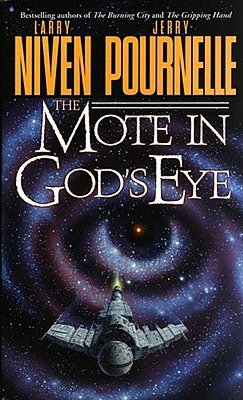 |
| Exploring the consequences of the Alderson Drive... |
Larry Niven
tells us that one key to The Mote in
God’s Eye lay in exploring the consequences of the Alderson space
drive. “Jerry had an interstellar empire
of Man,” he writes. “I had a leftover
alien. I saw that his Alderson Drive permitted undiscovered worlds inside his
Empire.”
Juliette Wade
enjoys taking phenomena she has seen in other stories and turning them on their
heads. Her story "The Liars"
takes the idea of a "primitive" alien language with very few words
and takes it in rather a different direction, because there's a very specific
reason why the language has such an apparently small vocabulary.
How Does It Feel?
More generally,
writers can find ideas in their own philosophical conclusions about life or
their feelings or emotions toward any of the items mentioned previously. You want to write a war story? Fine. How do you feel about that? Mark Twain hated slavery and wrote Huckleberry
Finn as a savage indictment of
that institution. Henry Fielding’s
personal experiences had convinced him that man often fails to see the goodness
in anything – and chose a bastard – Tom Jones – as his protagonist to
show this.
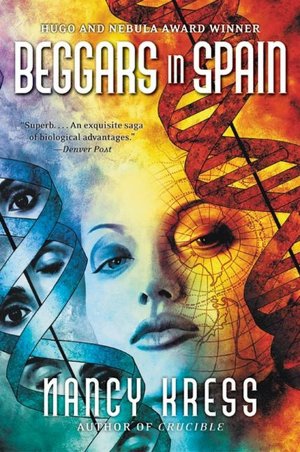 |
| Nancy was tired from lack of sleep |
Brian Garfield
one day found his convertible top slashed by vandals and was consumed by a
sudden and uncontrollable rage against the perpetrator. He wanted to hunt him down and kill him. And if not the actual perp, then another like
him. The mood quickly dissipated, but
then he wondered, What if it didn’t? And
the result was the novel Death Wish.
Nancy Kress
tells us that Beggars in Spain grew
out of an emotion – envy. “I need a lot
of sleep, and I resent the lost time.
One day I thought, What if I
didn't have to sleep at all? How
might that come about? Okay, not me, but
someone created that way....”
It Takes Two to Tango
Man and woman;
yin and yang. Sometimes one is not
enough. Or rather, one idea is not yet
an idea for a story.
 |
| Zwicky "idea box" for engineering design |
Keep a notebook of your observations. Some writers put their ideas on cards and put
them in a shoebox. Now and then, they
will pull two cards at random and consider the otherwise unconnected ideas
together. Sometimes this strikes a spark
and a story is born. Sometimes it doesn’t. This is very much like the “morphological
charts” proposed by Fritz Zwicky for engineering design.
Don’t laugh.
Mozart used to roll a set of three dice to generate random chord
progressions to see if they would suggest a theme or motif. If using random association as a jump-off
point was good enough for Mozart, it’s darned well good enough for us.
Of course, you
could just dump all the observations into your reptile brain and then one day
some wacky combination just pops up in your cortex, apparently from nowhere.
Lawrence Block
once read a magazine article on sleep,
which included a tidbit on people whose sleep center had been destroyed. This gave him an idea for a character (Evan
Tanner). He thought he might like to
write a story about this character and started wondering what a sleepless
person would do with all that extra time.
Then, during a chance encounter at a party, he fell into a conversation with a numismatic journalist who mentioned
the “lost gold of Armenia.” He had
gotten a lead on where the coins had been hidden from the Turks; but when he
and his colleagues, under cover of night, dug up the place, they found the
cache had been emptied long before. He
fused these two ideas into The Thief Who Couldn’t Sleep, the first of his Evan Tanner books.
(BTW, you might notice that both Lawrence Block and Nancy Kress wrote novels about people who had no need to sleep. Utterly different stories in two different genres. The weird thing is that Nancy was Block's successor as the fiction columnist for Writers' Digest. Cue Twilight Zone music.)
 |
| Two ideas collided in Stan's head |
Stan Schmidt
tells us that most of his stories have sprung from the collision of at least
two ideas.
“Once, for
instance, I read a John Campbell
editorial describing artificially produced waves with properties no natural
waves had. That made wonder: What about
the waves that constitute matter? Could
artificial versions be made with properties impossible for natural matter?
“John didn’t like
the first story I wrote based on that, but a little later, in my first year of
full-time teaching college physics, I was preparing
a lecture on Newton and for the first time really grasped the enormity of
his accomplishment in formulating his laws of motion and gravitation: Would I
have thought of it, knowing only what he did?
The next day, in the midst of delivering that lecture, I was suddenly
struck by the thought: What if Newton, at the crucial time, had seen things
that didn’t follow his laws? The result
was Newton and the Quasi-Apple.”
#
Transforming Ideas Into Stories
Eventually,
ideas have to become stories. Jerry
Pournelle made a stack of notes for near-future predictions. “We already had a title,” Larry Niven
said. Oath of Fealty. “And we
worked from the notes. One day he tried
to hand me more notes and I said, ‘We’ve got enough notes. What we need is a story.’ We worked up an outline and ran from there.”
Ah, but that will be a topic for another time.
#
It's Up to the Fish
Only those ideas that are least truly ours
can be adequately expressed in words.
--Henri Bergson
 |
| Who knows where this came from? |
John C Wright, proud founder of the Space Princess Movement,
provided the following thoughts about where ideas come from:
"A great writer
steals his ideas from ancient and classical sources, where he can find genius
greater than his own. A mediocre writer steals from his contemporaries, where
he finds material more popular than his own. A bad writer tries to be original,
and ends up creating rubbish.
"No one knows from
where ideas arise. If you believe in the faulty and unscientific theory of
Freud, you believe there is an awareness inside your awareness of which you
yourself are unaware, a sub-conscious or un-conscious mind that can deduce
artistic and symbolic ideas of great subtlety and complexity and present them
to you. If you believe the scientific theory of Homer, you know that there are
nine Muses whose divine footsteps haunt the slopes of Mount Ida or Parnassus or
Helicon where flows the Hippocrene where smote the shining hoof of Pegasus.
"I can tell you
this: trying to come up with an idea is like fishing. A fisherman can select
his bait and lure and find whatever shady spot he thinks the trout are biting,
but whether he gets a small inspiration or a large, or one he must throw back
is not up to him. It is up to the fish.
"For science
fiction writers, the bait is always what you yourself like in books you've
read, the lure is how your personal philosophy and outlook on life would
reflect on it, and the waters are you own experience and memories and
meditations.
"Let me use a
famous example: According to Asimov, John W Campbell Jr prompted Asimov to
write the story “Nightfall” after discussing a Ralph Waldo Emerson quote:
If the stars should appear one night
in a thousand years, how would men believe and adore, and preserve for many
generations the remembrance of the city of God which had been shown!
"Campbell’s contrariwise opinion was: 'I think men would go mad.'
"Campbell's idea is
taking something he'd read, in this case Emerson, filtering it through his
particular philosophy (that men are products of their environment, creatures of
no fixed nature and no pre-established or instinctive notions of the sublime or
beautiful), and came to the astounding conclusion that one of the sights we all
regard as noble and awe-inspiring would be by men born of a different environment,
a world without night, as Lovecraftian in its horror.
"Isaac Asimov was
accomplished enough as a writer to take this idea and execute it to make one of
the more memorable short stories of SF.
"Execution is
everything. The idea is only the hook."
+ + +







"If you can’t write a mere 500 words on either a tse-tse fly, the inside of a ping pong ball, or both, you have no business attempting fantasy or science fiction."
ReplyDeleteThis reminds me of something which a Dominican Friar once told me about preaching. He once was a professor at one of the houses of study for (future) friars in the Order of Preachers. As a first assignment, he would take off his hat (a Greek fisherman's hat) and pass it around, tasking each student to talk for at least 5 minutes about the cap. He got everything from the simple (it's a fisherman's cap, made of such-and-such material...) to the allegorical (ties to the call to be fishers of men) to the imaginative (a story of a fisherman seeing St Peter attired as a Greek fisherman). There's something to Chesterton's observation that priests have always been more popular than philosophers, because the priests tell people stories.
I suspect that you meant Stark's "Parker" novels. Parker (the author), of no relation to Stark's (the pseudonym) Parker, is Spenser's (not the poet but the detective) author.
ReplyDeleteGaah! Fixed. Thanks.
DeleteAnd it was Henry Fielding who wrote 'Tom Jones'. (Mind you, he did have a half-brother called John; the two of them founded the Bow Street Runners, the ancestors, you'll recall, of the modern police force.)
ReplyDeleteDouble-gaaah!
Delete